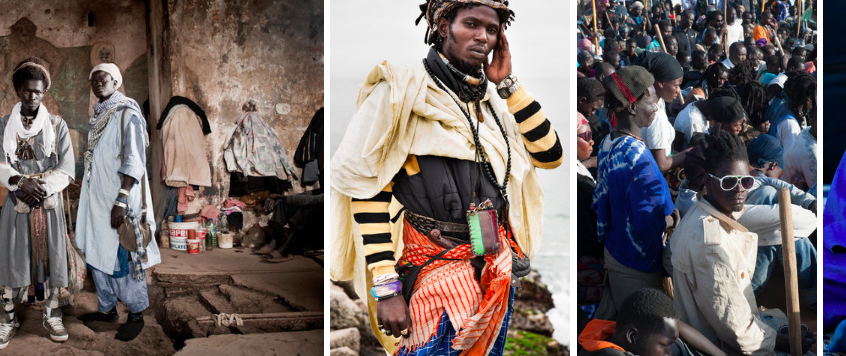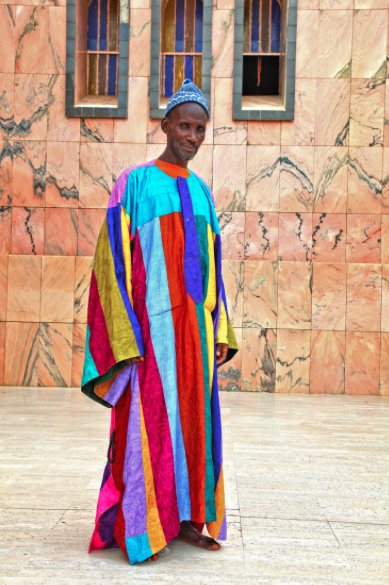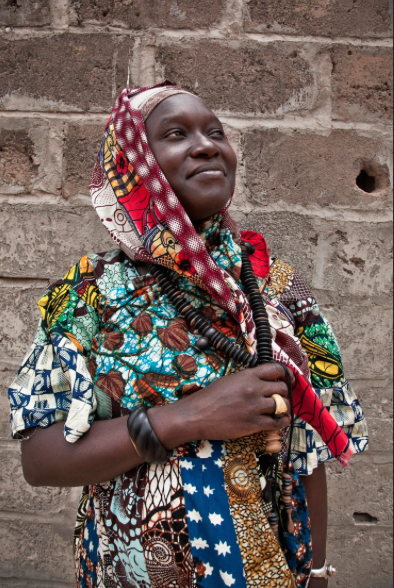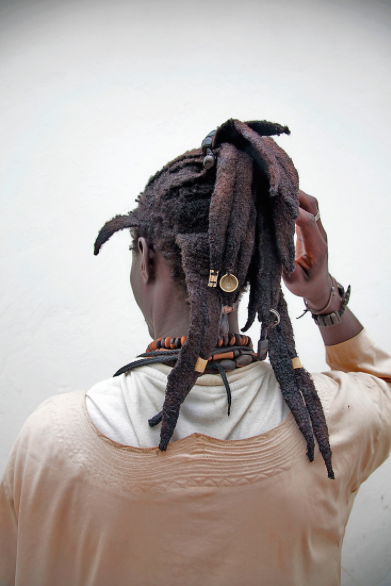THE FASHION OF DEVOTION OF SENEGALESE BAYE FALL

It is hard to come by information on the vestimentary practices of the Muslim brotherhood of the Baye Fall in the popular press, but last month Nicole Crowder published an article about it in The Washington Post that I will index as an updated reference on the subject of African fashion and devotion.
‘The roots of fashion and spirituality in Senegal’s Islamic brotherhood, the Baye Fall’ is a short piece that promotes the photographic work of Laylah Amatullah Barrayn who travelled to West Africa in 2013-14 in search of her roots. Therefore, it could be interpreted, at large, as an effort by an Afro-diasporic subject of partaking in heritage politics, since the Baye Fall, or Mourides, are prominent actors of Senegal’s cultural and religious life. The brotherhood was founded by the Sufi mystic Amadou Bamba Mbakke in 1883 and, at present, its disciples make up over 1/6 of the Senegalese population.


Professing a credo of hard work and humbleness, the Baye Fall and Yaye Fall (Female Mourides) carry their spiritual fate on their body in the form of a hairstyle of long, matted locks, leather amulets, and patchwork attire ( men’s boubous are called baye lahat). The clothes were once exclusively fashioned out of retrieved or donated scraps of cloth, since the adherents to the brotherhood relied (and partially still do) on the community for feeding and clothing. Wearing discarded items of dressing is an act of piety and a profession of humbleness, so that even members who do not beg wear them to express their spiritual affiliation and identity. Those Baye Fall who do beg accept offerings of fabric or used clothes, in effect promoting a form of ethical consumption where recycling also serves as a performative political act. The cast-off scraps that make up their garments are excluded from the economic cycle and the system of wealth and status associated with it.

The spiritual and ethical underpinnings of this vestimentary choice have however been upended in recent decades, when textile manufacturers began producing Baye Fall-inspired textiles for mass consumption. In the early 1990s, for example, the Senegalese textile company Sotiba produced one such fabric, turning a symbol of devotion into a commodity. In a short time, Baye-Fall inspired cloth (njaxa) became an object of desire for middle-class and affluent Senegale: not the signifier of existential choices but one among many elements in the fabrication of a fashionable self.
Bibliography
Victoria L. Rovine, “Conceptual Fashion: Evocations of Africa” in Victoria L. Rovine, African Fashion, Global Style: Histories, Innovations, and Ideas you Can Wear (2004), pp.157-190.
Photography
Laylah Amatullah Barrayn, “Journey Through Senegal”, http://laylahbarrayn.com/603585/journey-through-senegal/
Fabrice Monteiro, “Portrait of a Baye Fall”, http://fabricemonteiro.viewbook.com/portrait-of-a-baye-fall
Fabrice Monteiro, “La Voye du Baye Fall”, http://fabricemonteiro.viewbook.com/the-way-of-the-baye-fall